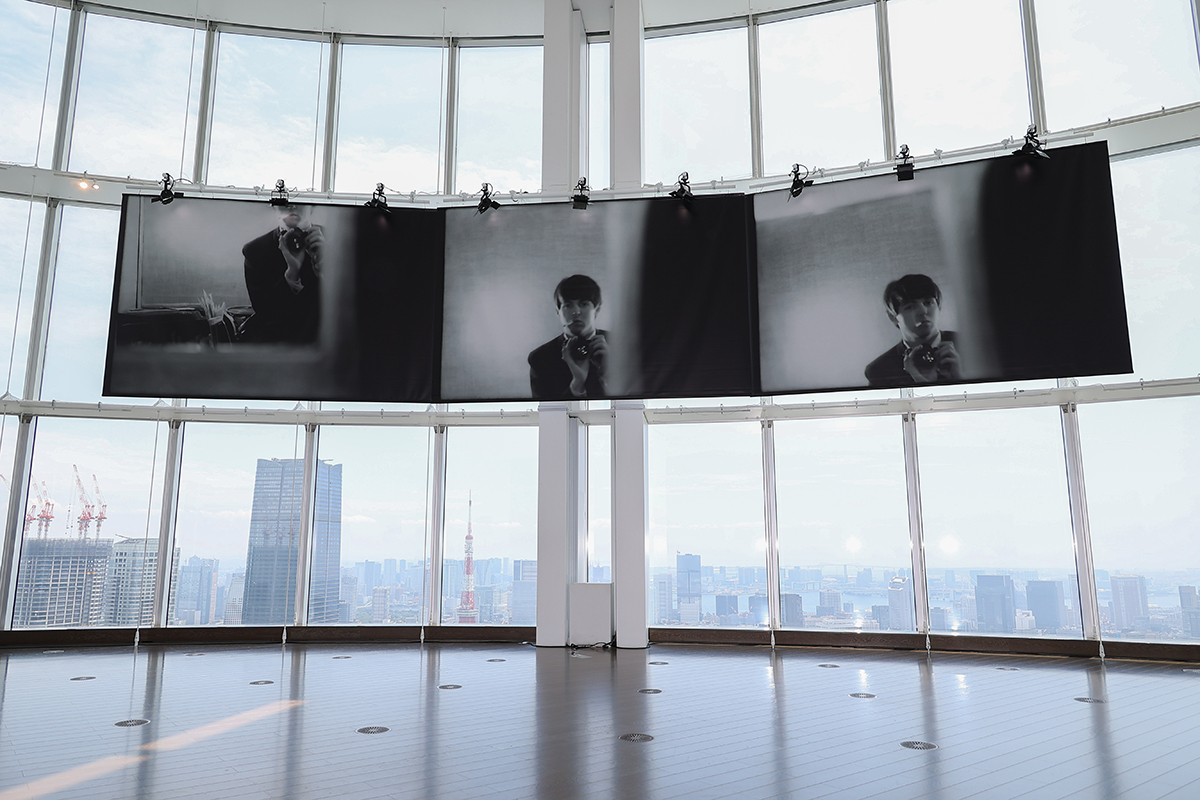PAUL MCCARTNEY PHOTOGRAPHS 1963-64 EYES OF THE STORM
HAPPENINGText: Alma Reyes
The world knows him as one of the star-studded icons of The Beatles. But, did we ever imagine Paul McCartney to be a talented photographer as well?
Until September 24 this year, Tokyo City View atop Roppongi Hills Mori Tower is showcasing “Paul McCartney Photographs 1963-64 Eyes of the Storm.” The unique exhibition reveals McCartney’s own photographs he took from around December 1963 when the Beatles emerged as the world’s most visible pop music phenomenon, until about February 1964 when they guested on the The Ed Sullivan Show in the U.S.

Entrance, Paul McCartney Photographs 1963-64 Eyes of the Storm, Tokyo City View, Roppongi Mori Hills Tower
In 2020, around 1,000 photographs taken with a Pentax 35mm SLR camera by McCartney were found in his personal archives. They were the singer-songwriter’s private accounts of the Beatlemania era, many which were never printed or publicized before. McCartney and a team selected about 250 shots that were to be shown at London’s National Portrait Gallery in 2023. The exhibit was attended by celebrities, fellow musicians, including the Beatles’ family members. The fathomable success of the show relived the band’s unmatchable impact on pop music, as well as opened the visitors’ eyes to the decorative life and musical journey of the international superstar. The artist recounts, “Anyone who rediscovers a personal relic or family treasure is instantly flooded with memories and emotions, which then trigger associations buried in the haze of time. This was exactly my experience when seeing these photos… It was a wonderful sensation because they plunged me right back.”
McCartney didn’t jump into photography by accident. The interest dived in during his childhood when he got his first Kodak Brownie camera. His brother Mike, was also an avid photographer who shot many photos of him and the band. McCartney also married photographer Linda Eastman in 1969. As the band was constantly swarmed by photographers, McCartney learned to observe their work and techniques. Moreover, German photographer Astrid Kirchherr persuaded the singer to develop his shooting skills.
McCartney recalled the challenges of mastering “actual” photography compared to today’s phone camera capabilities. “Despite the simplicity of the camera, the process, at least to me, was challenging, …you had to get (it) right, because there wasn’t a second chance… You couldn’t be lazy then. You had to take the right picture, actually compose the image in the frame without the safety of knowing you could crop it later.”

Entrance, Installation view, Paul McCartney, Self-portraits in a mirror. Paris, January 1964 © 1964 Paul McCartney under exclusive license to MPL Archive LLP
As with the London exhibition, the Tokyo showcase is organized chronologically into nine sections. They comprise mostly of monochrome self-portraits, images of the early beginnings of the Beatles in Liverpool, tours in London, Paris, New York, Washington, and color pictures from Miami. Additionally, audio-guide narration in McCartney’s own voice further authenticates the behind-the-scenes Beatles memories. At the entrance, visitors immediately catch the overhead visual panel against the open observatory deck windows, with an 11-meter ceiling height. Three sneak peak self-portraits taken in Paris in 1964 show the young McCartney with his camera.

Entrance, Installation view, The Beatles
Below, by the wall is a huge two-meter high photo installation of the four Beatles members: McCartney, John Lennon, George Harrison and Ringo Starr. Inside a glass encasement are the famous Beatles Four Heads (1964) bronze statues of the band members by David Wynne, made while the group was on tour in Paris. Visitors can also take a glimpse of the 35mm camera McCartney used. He recalled, “Everywhere I went I just took pictures. I was definitely looking for interesting shots, angles, lighting, compositions.”
Approaching the main gallery is a hallway of Beatles memorabilia — magazine and album covers, news clippings and photographs — rewinding the glory years of the band.
Read more ...





